140-acre rezone proposal gets first hearing from Bloomington city council, to continue on May 1
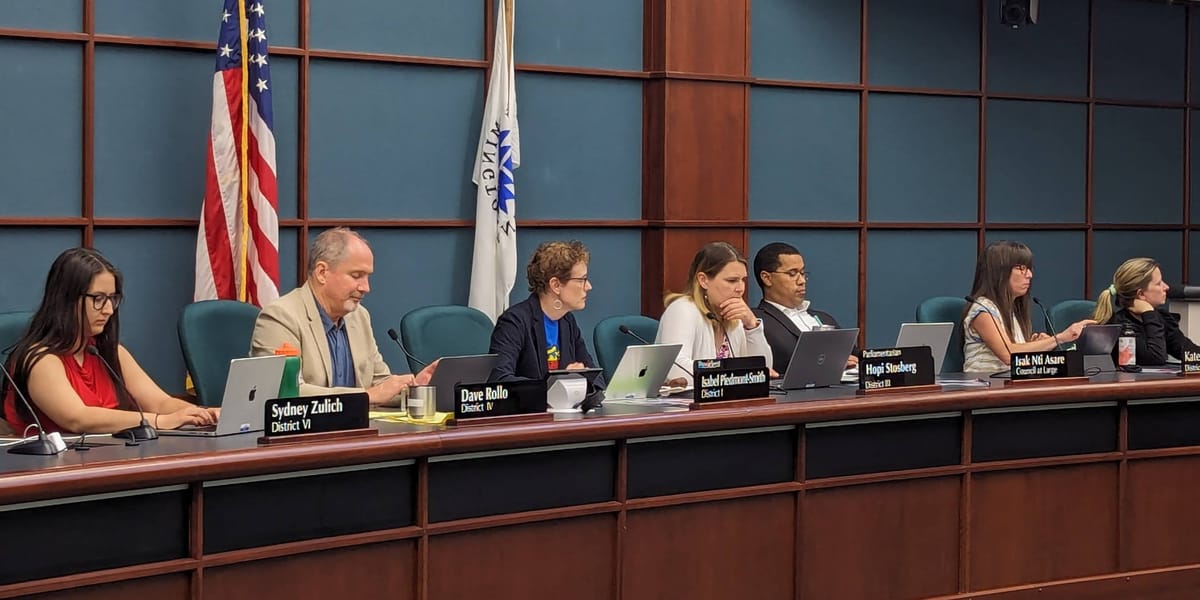

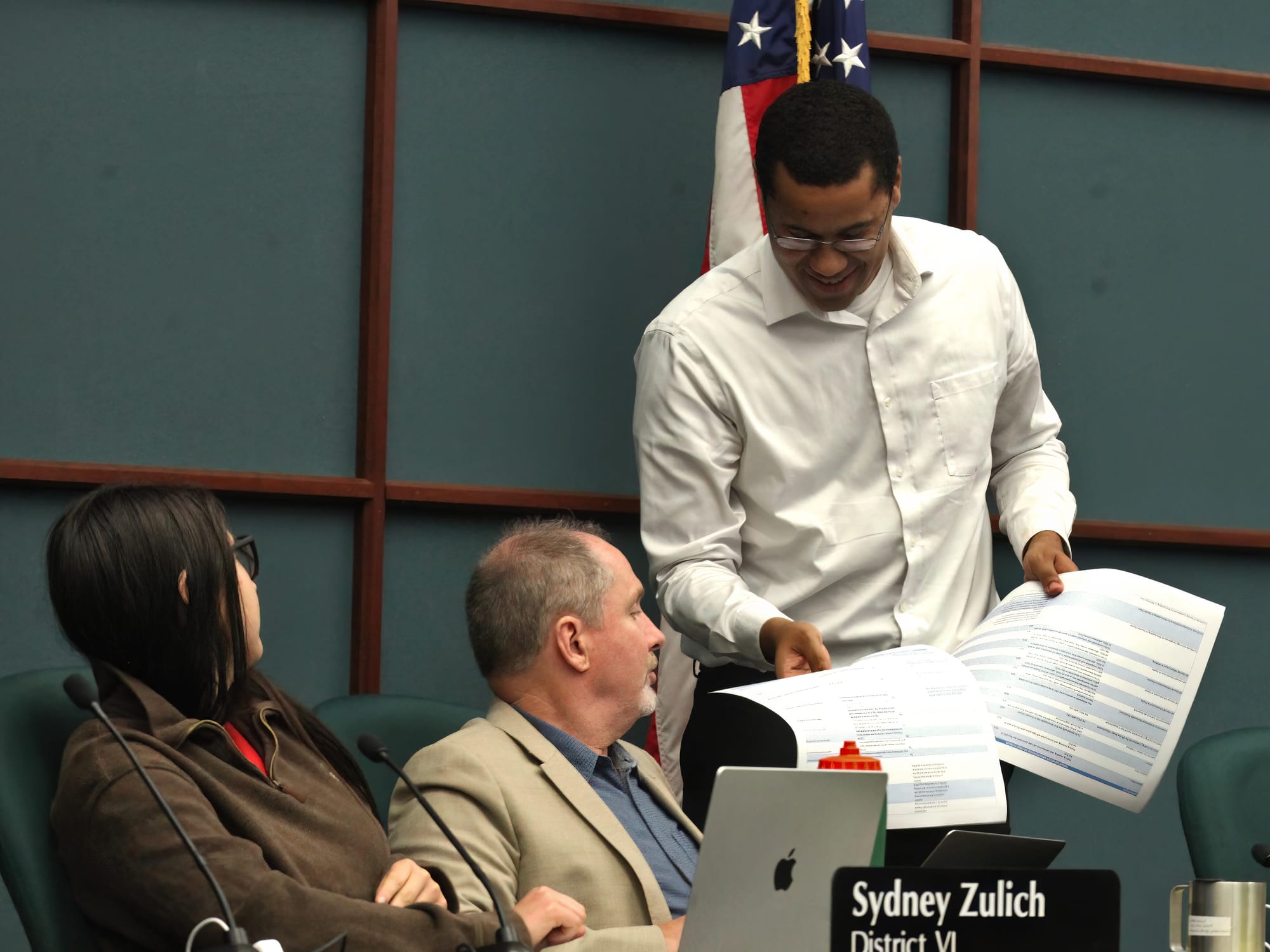
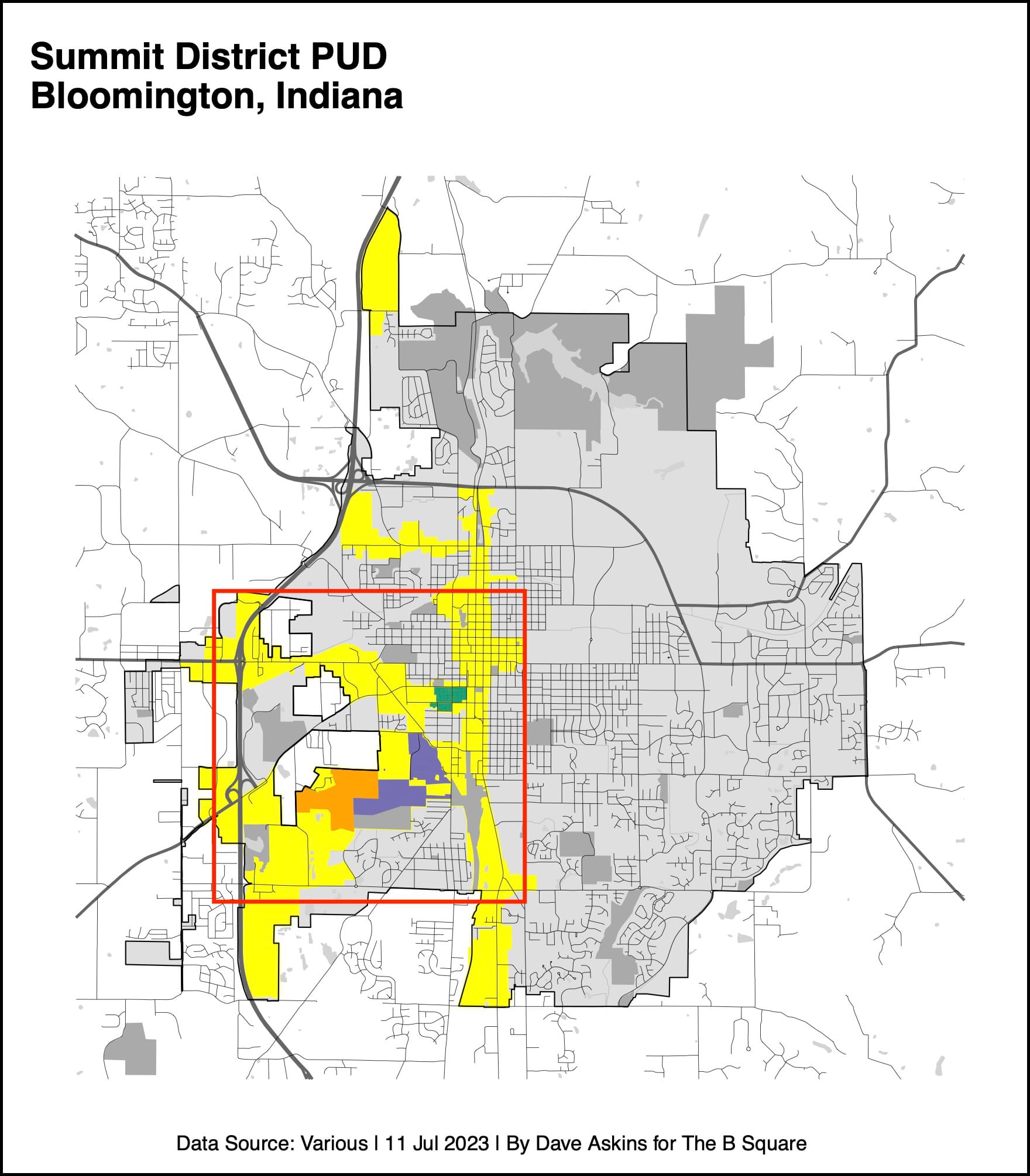
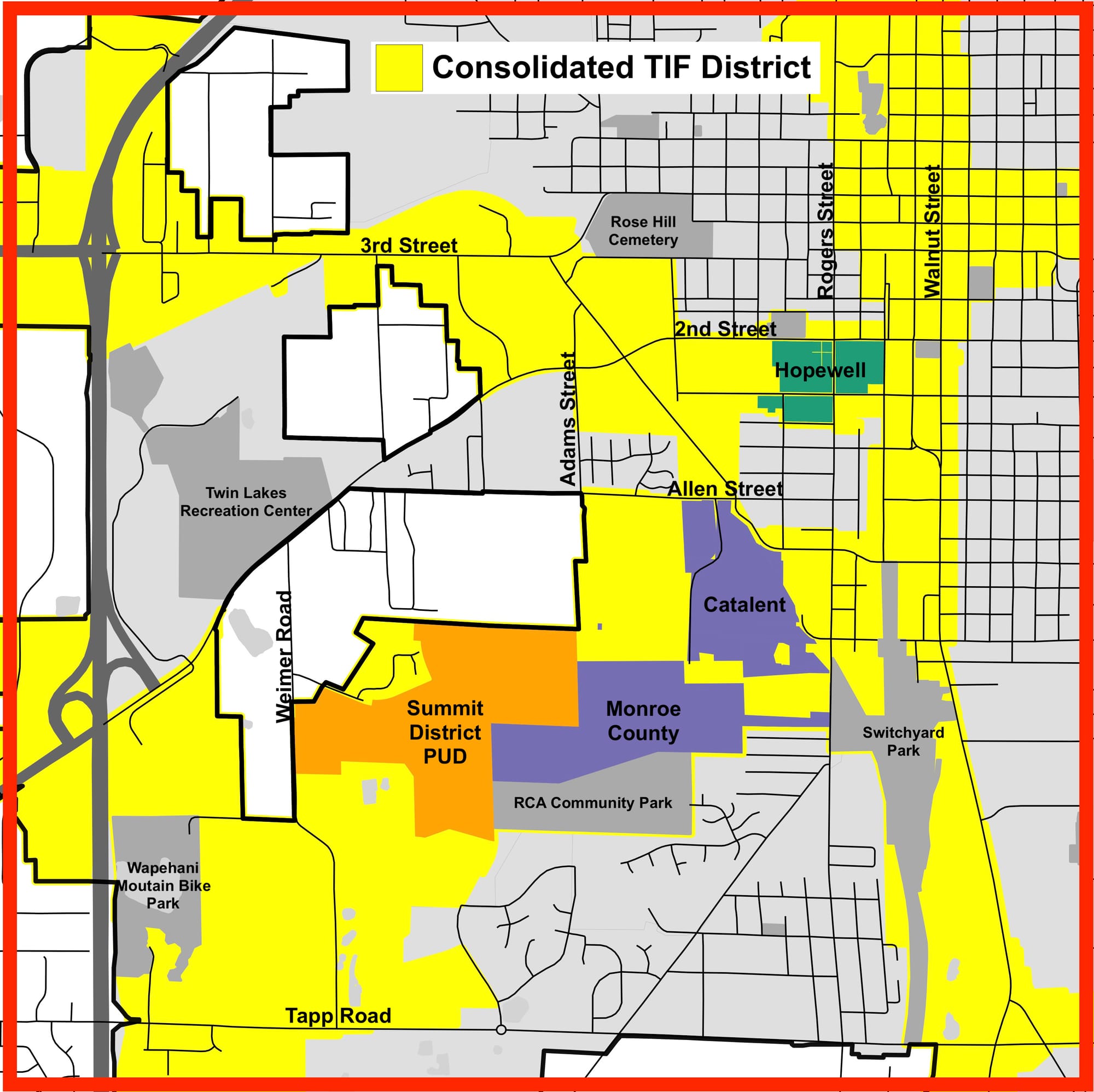
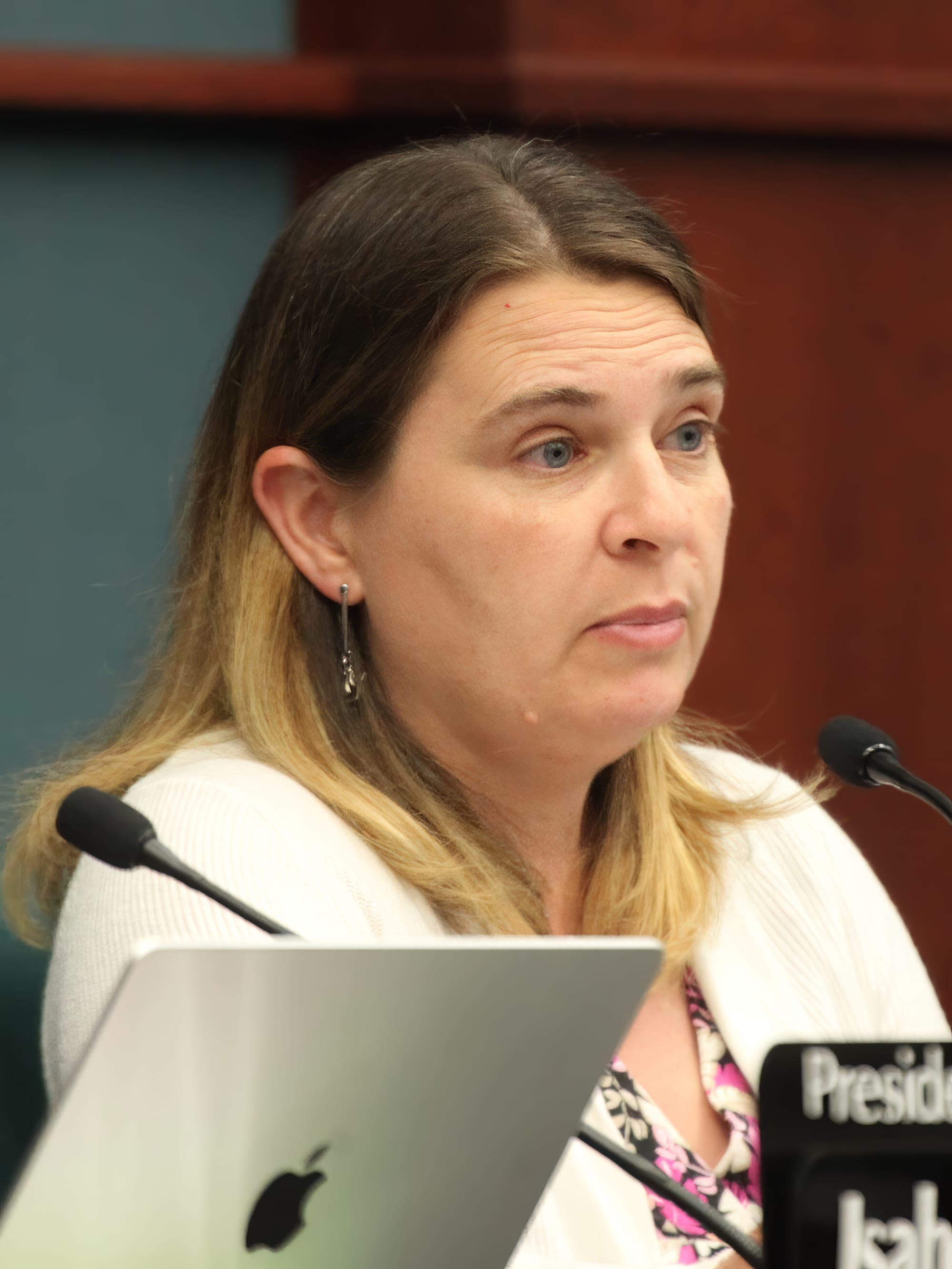
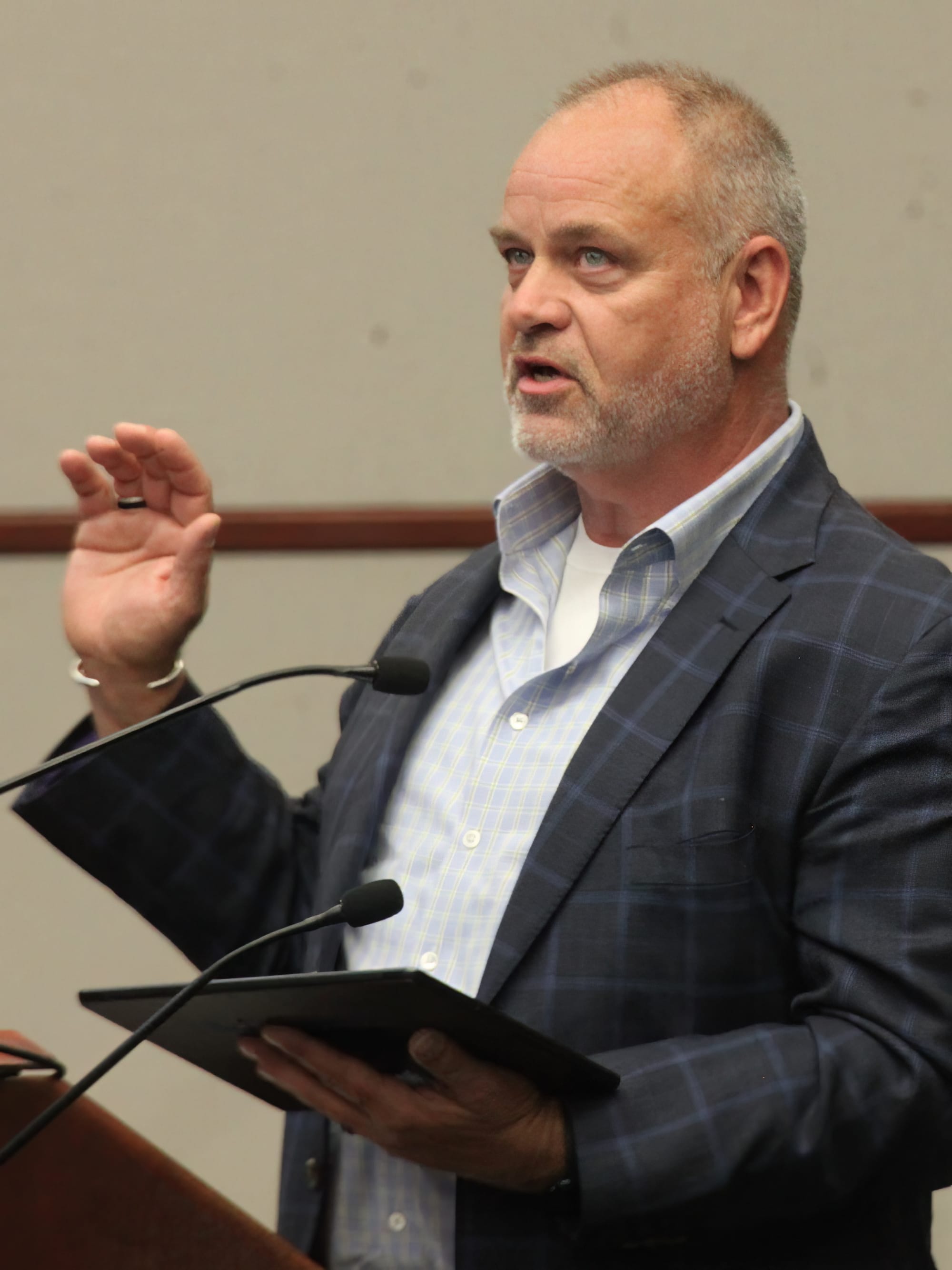
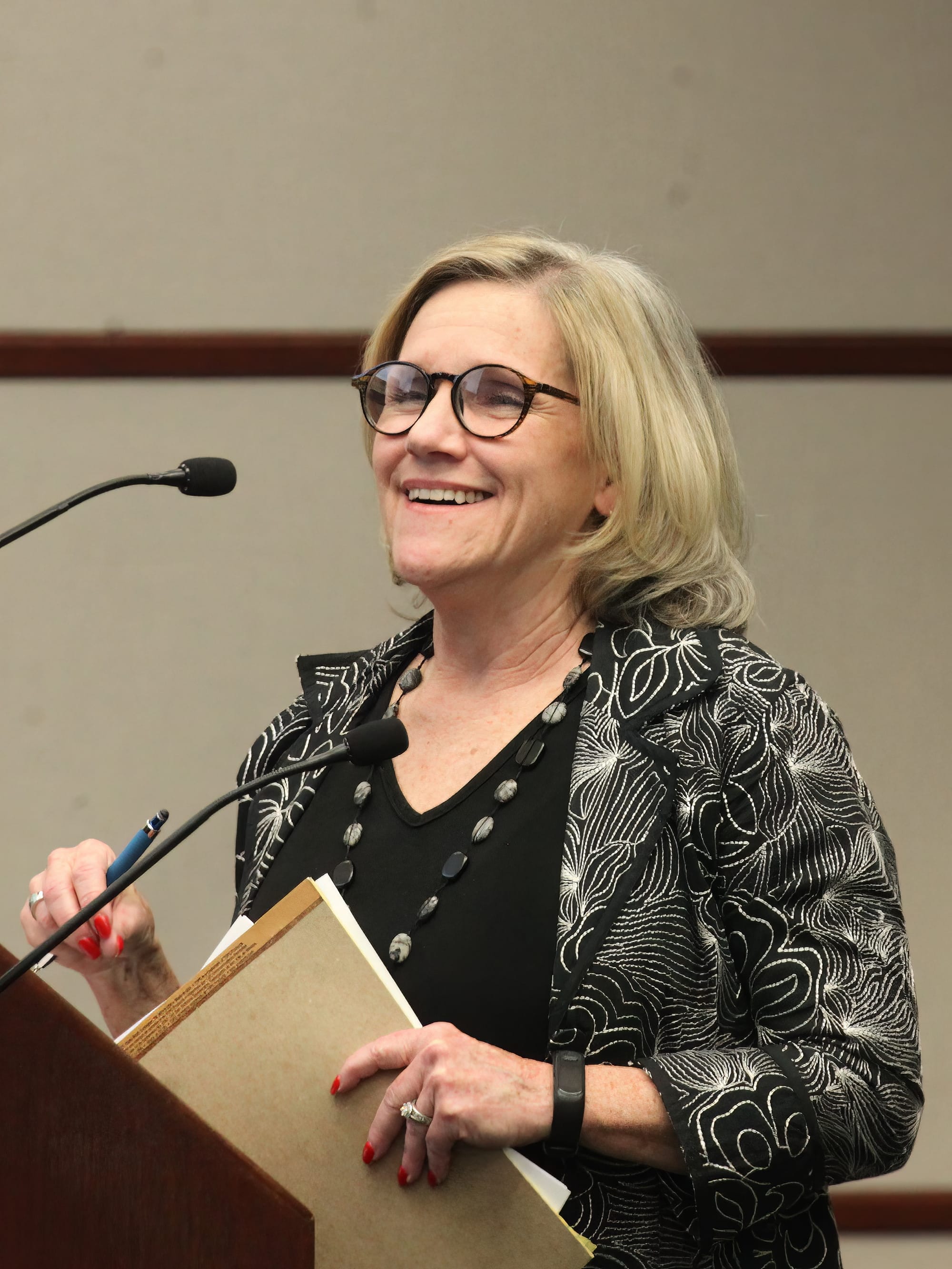
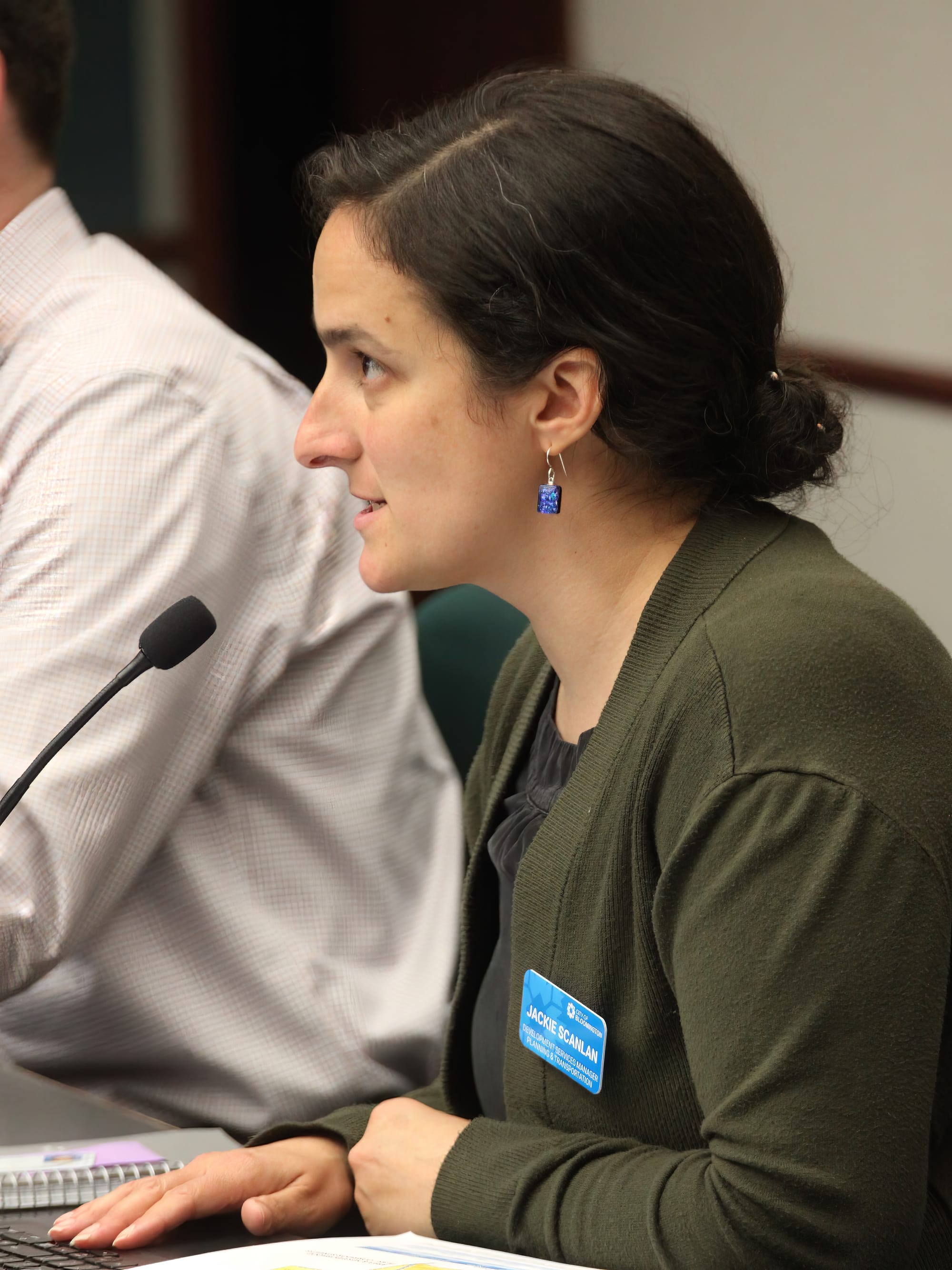
A rezone request for about 140 acres in the southwest part of Bloomington will get continued discussion from the city council at its May 1 meeting.
At its meeting this past Wednesday, the city council heard the presentation on the Summit District PUD proposal from development services manager Jackie Scanlan, followed by remarks from Travis Vencel, with Sullivan Development, and Angela Parker, legal counsel for Sudbury Associates.
A PUD (planned unit development) zoning district is a kind of customized zoning district that uses an existing zoning district as a baseline, but diverges from it, in order to deal with challenges that are unique to the district.
On Wednesday, the council gave itself just four minutes apiece for questions of staff and the petitioner. The public comment lasted around 45 minutes.
Highlights from public comment included concerns that have been expressed since the proposal was first heard by Bloomington’s plan commission, in July of last year.
Those concerns included the potential impact on stormwater flows, traffic, and the capacity of the city’s sewer system, in addition to impacts on the visual landscape.
Public comment also included support, based on the additional estimated 4,250 units of housing the rezone could make possible, in five new neighborhoods, over the course of the next 10 years.
The city’s plan commission gave the project a 7–0 recommendation at its mid-March meeting this year.
There did not seem to be any strong overt opposition to the rezone conveyed by councilmembers, during their allotted time for questions.
Councilmember Dave Rollo did remark on the sheer size of the area to be rezoned and the number of units it would allow. Rollo said it was the biggest development he had ever seen, in the more than 20 years he has served on the city council.
A few of the speakers during the public comment period described the development as putting “a city in a city.” Rollo described the area as eventually including “one and a half times the population of Ellettsville, going into 138 acres.” Ellettsville is a town of about 6,600 people, northwest of Bloomington.
Of the 4,250 estimated housing units, Rollo wanted to know what the ratio of rentals versus owner-occupied units would be. Scanlan told Rollo that the zoning code could not mandate whether a unit would be a rental or owner occupied. But Scanlan put the number of single-family units that would be possible at around 1,000.
For his part, the developer Vencel stressed Scanlan’s point that owner occupancy could not be mandated, but took the opposite perspective: “I think potentially, there are 4,250 units that could be owner occupied. It is illegal for us to legislate, and for this body to legislate, owner occupancy versus rental occupancy.”
Vencel stressed that the 4,250 figure was the estimate of the maximum number of units that could be built under the proposed zoning. It’s a number that has to be calculated so that a traffic study or a sewer capacity study can be done, Vencel said.
Rollo indicated some interest in exploring some kind of reasonable condition that might constrain the ratio of multi-family to single-family buildings.
The city council can add “reasonable conditions” to the regulations of the PUD, to ensure that the future development in the district aligns with community interests and objectives.
The sheer height that would be allowed in six blocks of the PUD—up to 12 stories—drew opposition during public comment and questions from councilmembers on Wednesday.
By way of background, the basic incentives in Bloomington’s unified development ordinance (UDO) include two additional stories for a building, if affordable housing incentives are satisfied, and an additional story, if sustainability incentives are satisfied. But the third story on top of the two is limited in square footage to half the amount of the other stories, and has to be stepped back. So the basic UDO incentives allow for an additional two and half stories.
Under the incentive schedule laid out in the Summit District PUD, it would be possible to add two full stories and two more on top of that, if both kinds of incentives (affordable housing and sustainability) were satisfied. That would make for a total of four additional stories, which when added to the basic height maximum of 8 stories in the PUD’s MN zoning district, would make for 12 stories.
On Wednesday, Vencel acknowledged that the proposal of allowing for two plus another two stories for the incentives had been described as “double dipping.” But Vencel pointed out that it is exactly the same approach that Bloomington itself took when it put together the Transform Redevelopment Overlay for the Hopewell neighborhood.
Councilmember Hopi Stosberg noted that as far as she knew, the only 12-story buildings in Bloomington are Indiana University dorms. Would these 12-story buildings wind up being rented by mostly students or else not at all?
The question Stosberg put to Vencel was this: “I want you to talk about why you think there’ll be non-student interest and…what kind of market analysis have you done about non-student interest in living on the 10th story of an apartment complex?”
Vencel responded to Stosberg by saying that the allowed uses in the Summit District PUD don’t allow “student housing” as a use.
In Bloomington’s UDO, in the allowed use table, when a zoning designation does not include “student housing or dormitory,” that does not mean that students cannot rent apartments in that district. Rather, it means that a building can’t have a combination of apartment sizes that would cater to the student market—and that bedroom size mix is defined in Bloomington’s UDO.
Venceil pointed to an updated housing study recently released by the Regional Opportunity Initiative that indicates that by 2035 Bloomington needs to add 697 rental units at $700 per month.
Vencel said, “The only way you can build product that’s under $700 a month is to build small and dense—that’s the only way to do it. You’ve got to spread those construction costs out over a bunch of units that are small.” To spread out construction on a bunch of small units, Vencel said, “The only way to do that is to go up.”
Councilmember Sydney Zulich wanted to know how the five neighborhoods would be made walkable—would there be grocery stores? Vencel responded by saying that grocery stores are an allowable use in the use table that is a part of the proposed PUD.
Councilmember Isak Asare wanted to know if the rezone proposal reflected any innovation. He asked Vencel if the requested rezone is “really using this opportunity to do something cool and different, other than building a lot of houses.”
A highlight of Vencel’s response to Asare was to point to the requirement that 15-percent of the units built in the PUD have to meet affordability requirements, but in the central area of the PUD, that requirement is 20-percent. About the 20-percent affordability requirement, Vencel said, “That has never been done before.”
Responding to Asare, Vencel also alluded to a topic that came up in an earlier question from councilmember Kate Rosenbarger about the use of electric service for heating of water and space. The project includes a requirement that residential units rely on electric service for heating of water and space.
Vencel’s response to Asare included this statement: “A project that is as committed to electric for this many homes—never been done before.”
At Wednesday’s meeting, council president Isabel Piedmont-Smith asked about the concerns that had been raised by the city’s environmental commission, in connection with parks and open spaces designated in the PUD.
Scanlan said that the parks and open space (PO) in the Summit District PUD is not for public parks as it is in Bloomington’s UDO. Scanlan said, “I would say 98 percent of what they’re designating as parks and open space will be in a conservation easement.”
From the proposed Summit District PUD: “ The PO District includes 53 acres which are designated conservation areas, tree preservation, park space, water and drainage area, karst features, and trails—all enhancing the natural attributes of the PUD.”












Comments ()